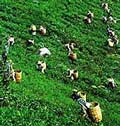
Evidence of habitation in Pahang dates back to the Mesolithic Era during which the Mesolithic people lived in caves and mountains of Pahang. According to anthropologists and historians, Pahang was also home to the Middle Age men and the Last Stone Age (early Bronze Age men) and the Semang aborigine tribe.
Long famous for the deposits of tin and gold found along the upper reaches of Sungai Tembeling (Tembeling River), Pahang had attracted the interest of outside powers even before the founding of Melaka in 1400. Under the control of the maritime empire of Srivijaya (centered around Palembang in southeast Sumatra), Pahang had expanded to cover the entire southern portion of the Malay Peninsula in the 8th and 9th centuries.
With the collapse of Srivijaya around 1000, Pahang was claimed first by the Siamese and then, in the late fifteenth century, by Melaka. After Melaka fell to the Portuguese in 1511, Pahang became a key part of the territorial struggles between Acheh, Johor, the Portuguese, and the Dutch. Repeated raids, invasions, and occupations devastated the state until the decline of both Achenese and Portuguese power in the early 17th century that allowed Johor to re-establish its influence and became the great Johor-Riau Empire
| |







